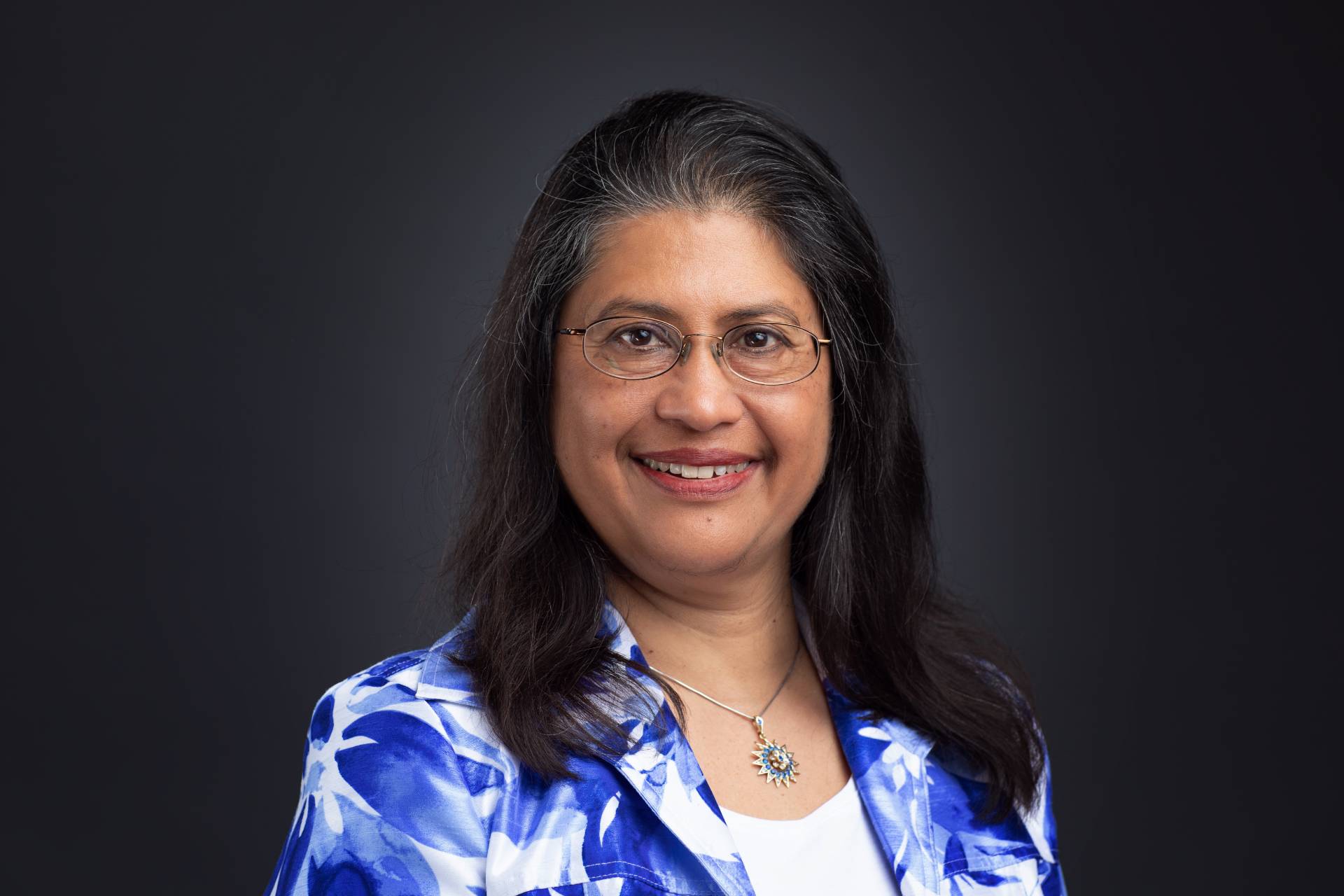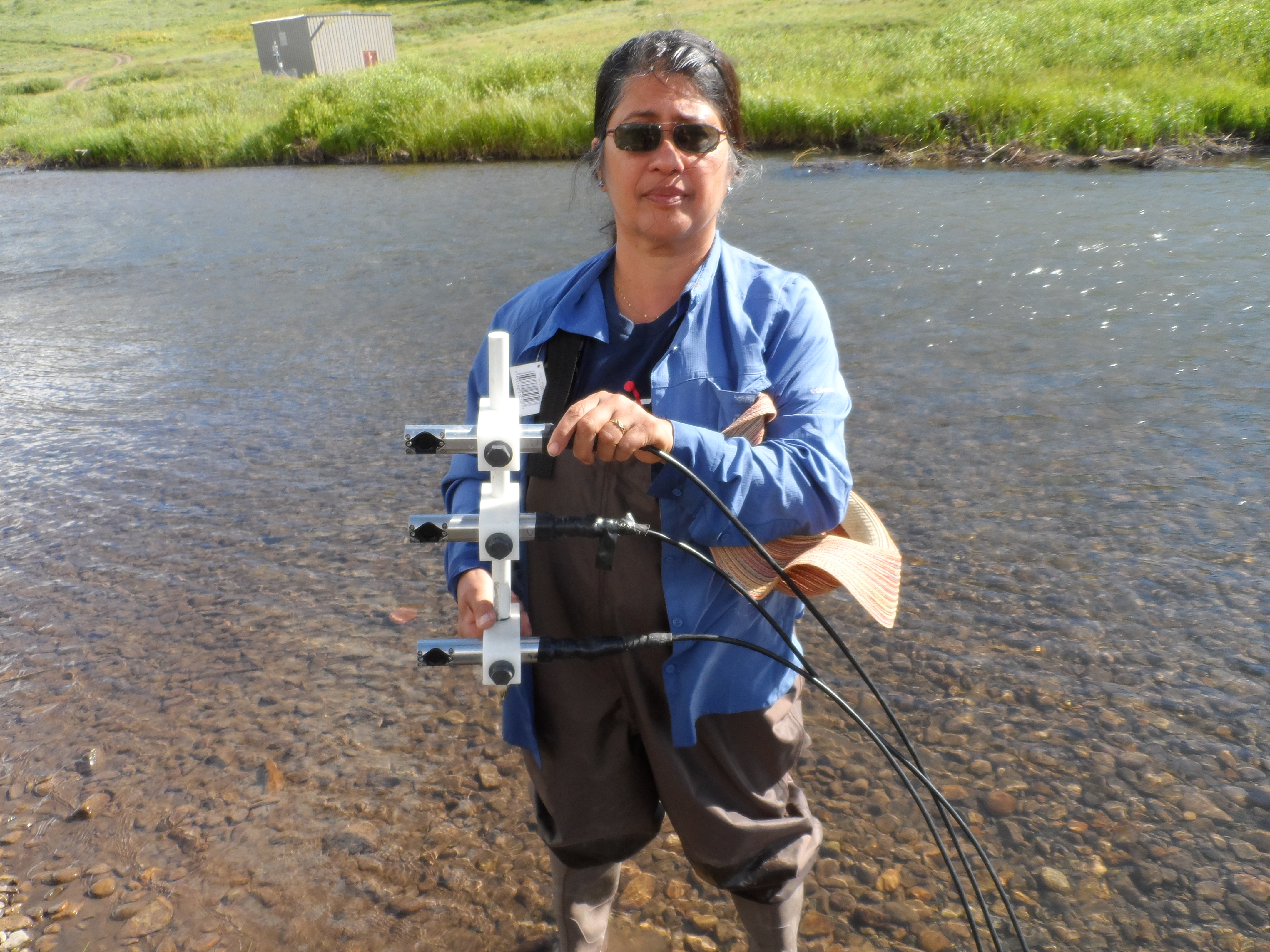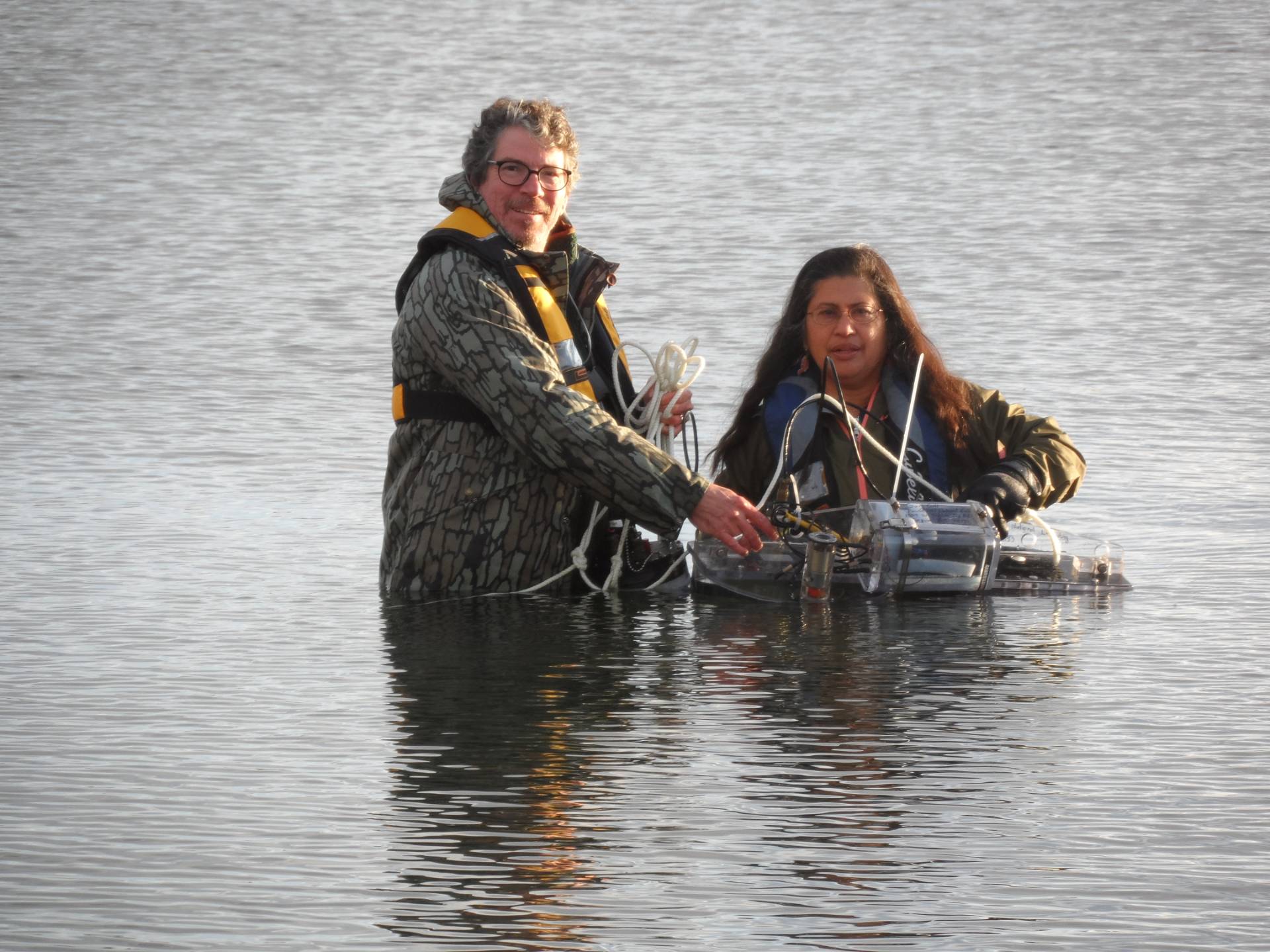MSU professor’s fresh water mission
Michigan State University professor is committed to solving one of Earth’s most pressing problems — access to clean water — through applied physics.
More than 70% of Earth is covered in water, but only about 3% is drinkable. This finite quantity is segregated in ice caps, lakes, rivers, groundwater and the atmosphere. Ruby Ghosh, research associate professor in the Department of Physics and Astronomy at Michigan State University, has lived in many countries, from Kenya to Egypt to Brazil, and is keenly aware of the complexity that many people face trying to access this critical resource.
“This is very personal to me,” she said. “I wanted to find a way to use technology to make an impact for communities where my family came from and around the world.”

Ghosh’s family is originally from the Bengal region of India, where access to clean water is becoming a serious problem. Aquaculture is one of the primary sources of protein to this community, but fishing in the Bay of Bengal and aquaculture farming requires clean, contaminant-free water. Groundwater also suffers as water table drawdown affects the oxidative state of heavy metals, allowing these chemicals to mobilize and foul the diminishing resource for drinking water and agriculture.
Ghosh wanted to make a difference by cleaning up polluted waterways, improving aquaculture operations and increasing access to drinking water, but a fast, reliable method to make this measurement has been lacking. Most devices are susceptible to fouling or degrade in harsh conditions. Ghosh has developed a small device that could revolutionize how researchers assess environmental health. Her work leverages the entrepreneurial spirit of MSU, and her company, Opti O2 LLC, has obtained more than $5 million in funding, resulting in collaborations across academia, industry and the National Labs.
A Small Start with A Big Idea
Arriving at Michigan State University in the late 1990s, Ghosh applied her expertise in optical materials and sensing technologies to make an impact in the world. These efforts resulted in the development of Opti O2, a device to quickly and accurately monitor the concentration of dissolved oxygen in water.
“I admired that Ruby was going off the beaten path and venturing into new directions of practical and applied research,” said Wolfgang Bauer, professor and former chair of the Department of Physics and Astronomy at MSU. “I resolved to support her research as much as possible, and it is extremely gratifying to learn that her tenacity and commitment is paying off now.”
The unique construction of the device, about the length of two credit cards, consists of a lens cap embedded with optical indicators on one end. Light shines on this sensing lens, passes through a filter. The color of the emitted light indicates the concentration of dissolved oxygen in the water.

According to Ghosh, the optical properties of the lens material set Opti O2 apart from other oxygen monitors already on the market. The device’s sensing lens does not degrade or foul, remaining stable in a variety of condition that span salinity, temperature and contaminants.
“The photophysics of our sensing material make it very simple to do this measurement,” said Ghosh. “Optical detection is superbly easy and the manufacturing process is robust.”
While Ghosh is focused on the design and production of Opti O2, she is partnering with specialists in geology and hydrology to ask the scientific questions, deploy the device and analyze the results.
The Environmental Canary in the Coal Mine
Dissolved oxygen is an important characteristic of a healthy ecosystem. It provides researchers with a way to assess the quality of water quickly, identify problems and monitor contaminants entering a water system.
The sensor assesses changes in dissolved oxygen at one point (approximately one centimeter) in the water column, allowing a network of sensors to produce a picture across an entire ecosystem. The information is transmitted back to the lab wirelessly by a data-logging telemetry unit.
“The purpose of the technology is to be able to intervene before bad things happen,” said Ghosh. “It’s like when you go to the doctor and they measure your blood pressure and respiration rate, only we’re thinking about an entire watershed instead of a person — the oxygen in water gives you a real-time perspective into the health of your ecosystem.”
The sensor is effective for environmental monitoring, aquaculture and wastewater processors and watershed authorities. The system provides continuous measurements with minimal maintenance in the most challenging of environments, withstanding chemical attack and biofouling while experiencing minimal degradation. By deploying a network of Opti O2 sensors, the technology offers continuous monitoring of dissolved oxygen concentration in water and soil of aquatic and marine environments.
Bringing an Idea to Commercialization
Ghosh’s path to a working prototype was long and circuitous. MSU’s Innovation Center offered guidance on her journey. The Center helps faculty turn their intellectual property into marketable products and start-up companies by connecting them with industry partners and resources.
“It doesn’t do anyone any good to invent a widget that no one wants to buy,” said Brad Fingland, director of venture creation at the MSU Innovation Center. “We have a huge team that allows us to work with faculty to ensure their intellectual property makes a broader impact.”
Ghosh secured a 21st Century Jobs Fund grant from the Michigan Economic Development Corporation to develop the optical sensing material in her lab at MSU. In the past decade, Ghosh has secured two patents on the optical oxygen sensor system to produce reliable measurements of the concentration of dissolved oxygen in the water.

After participating in a university-led entrepreneurship boot camp, Ghosh learned how to set up her business and founded Opti O2 in 2011. She has received three Phase I/Phase II Small Business Innovation Research (SBIR) awards from the Department of Energy to design, prototype and manufacture the optical sensor. Ghosh also received matching funds from Michigan Emerging Technologies Fund after securing the SBIR awards for commercialization activities and intellectual property. She connected with the Michigan Small Business Development Corporations (MI-SBDC) for guidance on everything from business formation, setting up banking, writing a commercial plan and navigating the SBIR process.
Opti O2 has developed strategic partnerships with the Pacific Northwest National Lab and the Lawrence Berkeley National Lab to deploy the sensors in the field over long periods, currently five years and counting. The two National Lab study sites focus on pressing environmental challenges, salinization of coastal ecosystems due to sea-level rise and the effects of declining snow pack on freshwater availability.
“The current device is like a BMW — indestructible and precise,” said Ghosh. “I have it in my head to make a VW-version of the device that could be used by developing countries, and I would love to talk to other organizations who can help connect me with researchers who could use this device to examine environmental conditions around the world.”
Ghosh is joined by Michael Freeman, Ph.D., electronics engineer, and Kirk Brown, interim-CEO, on the Opti O2 project. The team is augmented by Mitch Kilbourn, lead technician and lab manager, Charles McIntire, data analyst and computing system support, and Julia Egbert, lab technician and participant of the state of Michigan’s “STEAM Ahead” internship program.
- Categories: